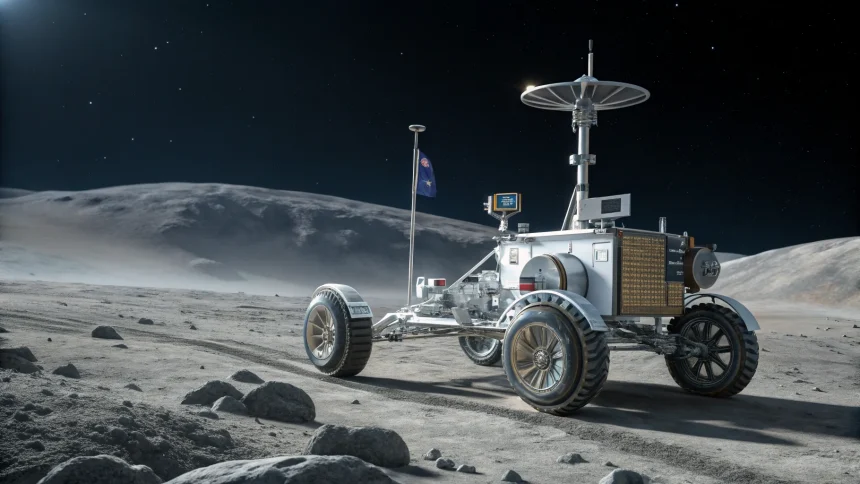NASA has selected Jeff Bezos’ space company Blue Origin to deliver the agency’s VIPER rover to the moon’s south pole, marking a significant advancement in the private space industry’s role in lunar exploration.
The contract award to the Amazon founder’s space venture comes with a critical condition: Blue Origin must first demonstrate its capability to successfully land a payload on the lunar surface in an upcoming mission before proceeding with the VIPER deployment.
VIPER (Volatiles Investigating Polar Exploration Rover) represents one of NASA’s key instruments for lunar research, designed to search for water ice and other resources at the moon’s south pole. These resources could prove essential for future human missions and potential lunar bases.
Testing Requirements Before Launch
Before Blue Origin can transport the valuable NASA rover, the company must prove its landing technology works. This test requirement highlights the cautious approach NASA is taking with commercial partnerships for critical missions.
Space industry analysts note this represents a milestone for Blue Origin, which has been working to establish itself as a major player in space transportation alongside competitors like SpaceX and United Launch Alliance.
“NASA is applying lessons learned from previous commercial partnerships,” said Dr. James Wilson, space policy expert at the University of Colorado. “They want verification of capabilities before entrusting valuable scientific equipment to commercial providers.”
The Strategic Importance of VIPER
The VIPER mission carries substantial scientific weight for NASA’s Artemis program, which aims to return humans to the lunar surface. The rover will:
- Map water ice deposits at the lunar south pole
- Analyze the concentration and accessibility of potential resources
- Help determine viable landing sites for future crewed missions
The lunar south pole has attracted particular interest from space agencies worldwide due to evidence suggesting significant water ice deposits in permanently shadowed craters. These resources could potentially be converted into rocket fuel, drinking water, and breathable air for future astronauts.
Commercial Space Competition Intensifies
The NASA contract represents a win for Blue Origin in the increasingly competitive commercial space sector. The company, founded by Bezos in 2000, has been expanding its portfolio beyond suborbital tourism flights.
Blue Origin’s lunar lander, named Blue Moon, has been in development for several years. The company has promoted its capabilities for delivering cargo and eventually humans to the lunar surface.
“This contract puts Blue Origin in a position to demonstrate end-to-end lunar delivery capabilities,” noted Sarah Martinez, director of commercial space programs at the Space Policy Institute. “Success with VIPER would position them for additional NASA and commercial lunar contracts.”
The financial terms of the agreement between NASA and Blue Origin have not been publicly disclosed, though similar lunar delivery contracts have ranged from $200-300 million in value.
NASA’s decision to partner with Blue Origin aligns with the agency’s broader strategy of leveraging commercial capabilities for space exploration while focusing government resources on more advanced technologies and scientific objectives.
If successful, the VIPER mission will provide critical data about lunar resources that could shape the future of human space exploration beyond Earth orbit. The mission timeline depends on Blue Origin’s successful demonstration flight, with the earliest possible deployment expected in the next two to three years.









